Abstract
A specific method has been developed for the extraction and measurement of staphylococcal nuclease in foods in which Staphylococcus aureus has grown. The method was used to compare staphylococcal growth with nuclease production in foods under varying conditions of temperature, aerobiosis, and competition from other microorganisms. It was concluded that the nuclease is produced under any conditions that permit growth of S. aureus, and little or no interference with the test was encountered either from mixed, natural populations or from a variety of pure, laboratory cultures. Nuclease and enterotoxin A production were shown to vary in synchrony for the 234 (Casman) strain of S. aureus, and the sensitivity of the enzymatic detection of nuclease was comparable to the sensitivity of serological detection of enterotoxin A. It was found that 15 min at 121 C was required to reduce the nuclease activity in slurries of contaminated ham below the level present in the unheated slurry. The extraordinary heat resistance of the nuclease permits its detection even in foods heated subsequent to the growth of S. aureus. The nuclease analysis requires about 3 hr to complete and requires no unusual equipment or reagents.
Full text
PDF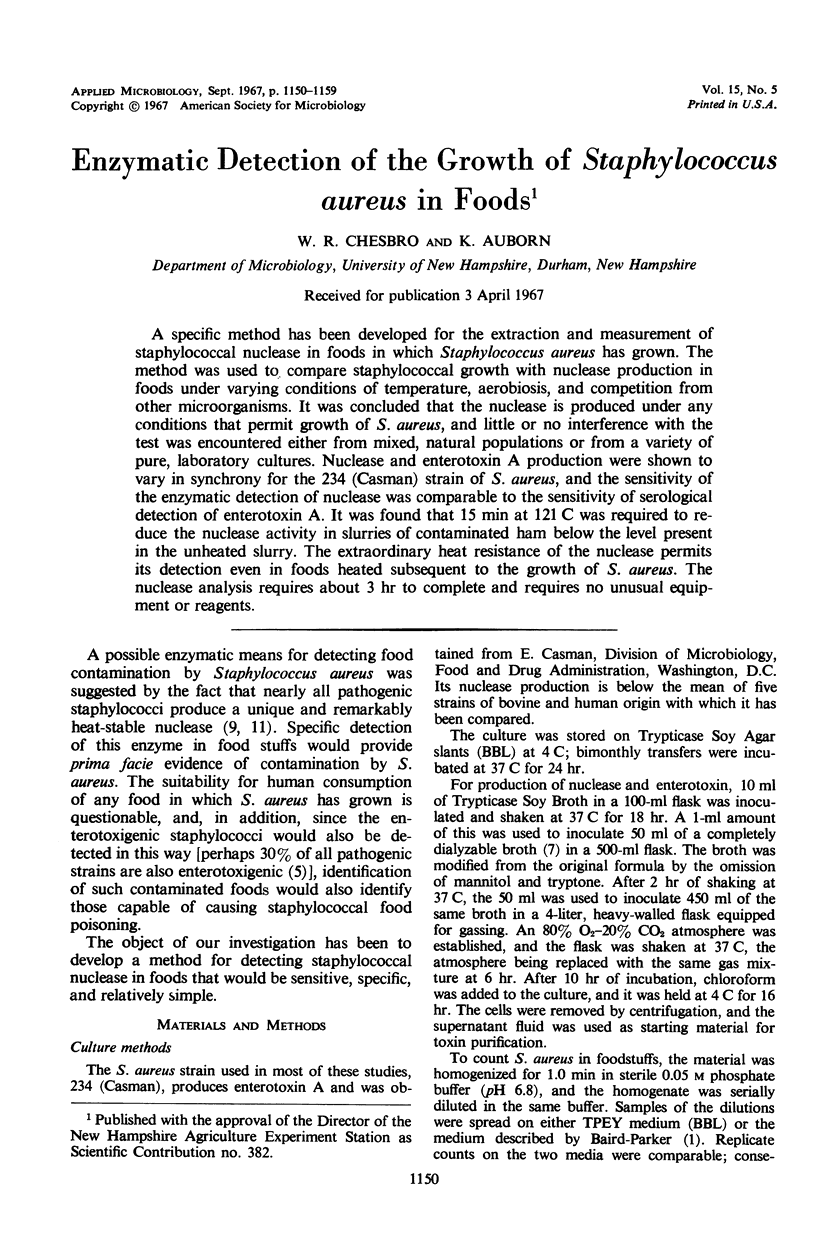
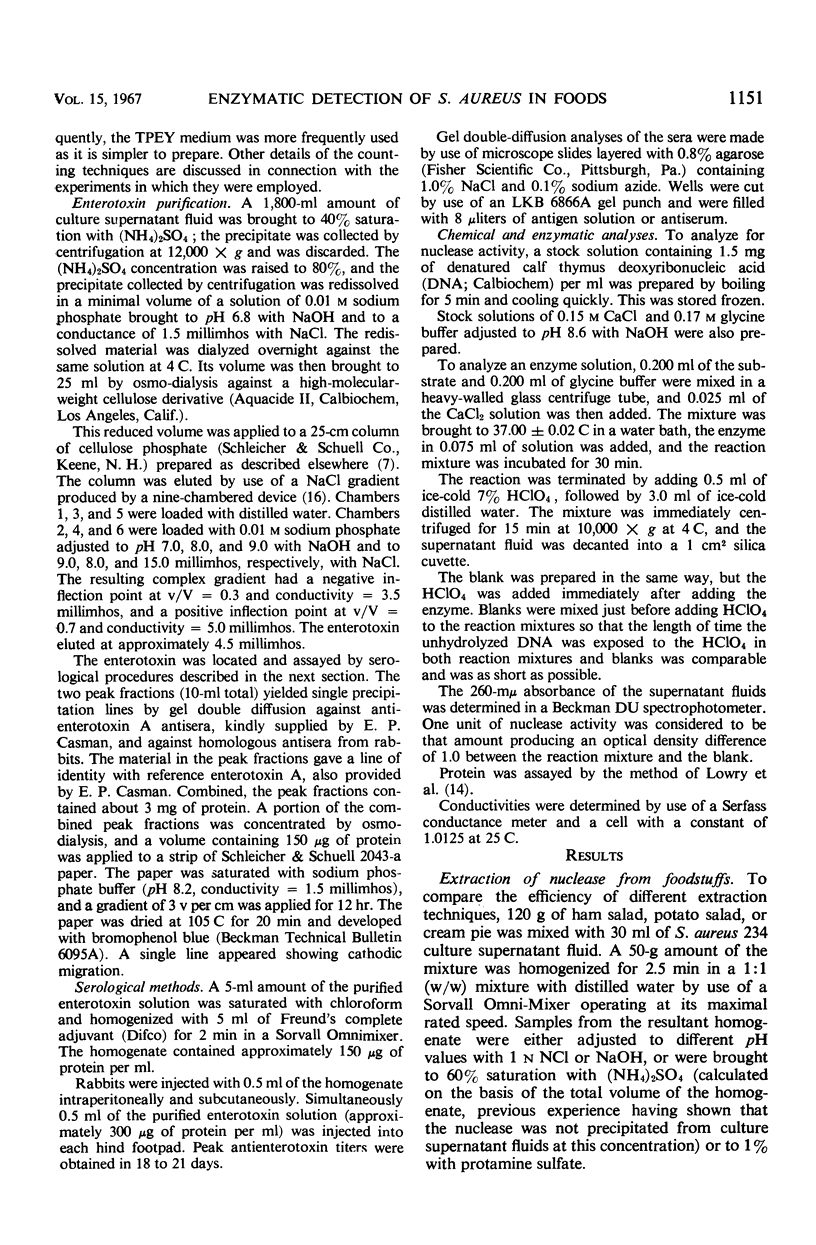
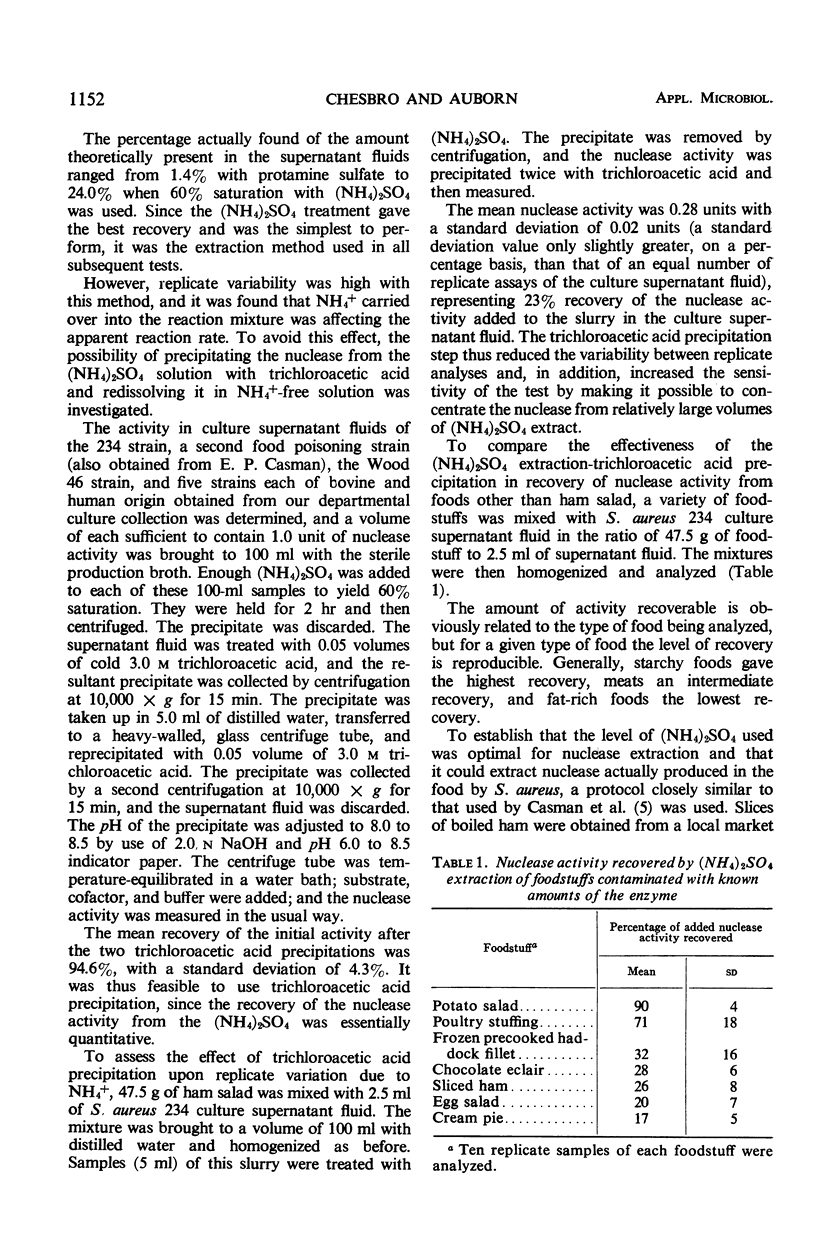
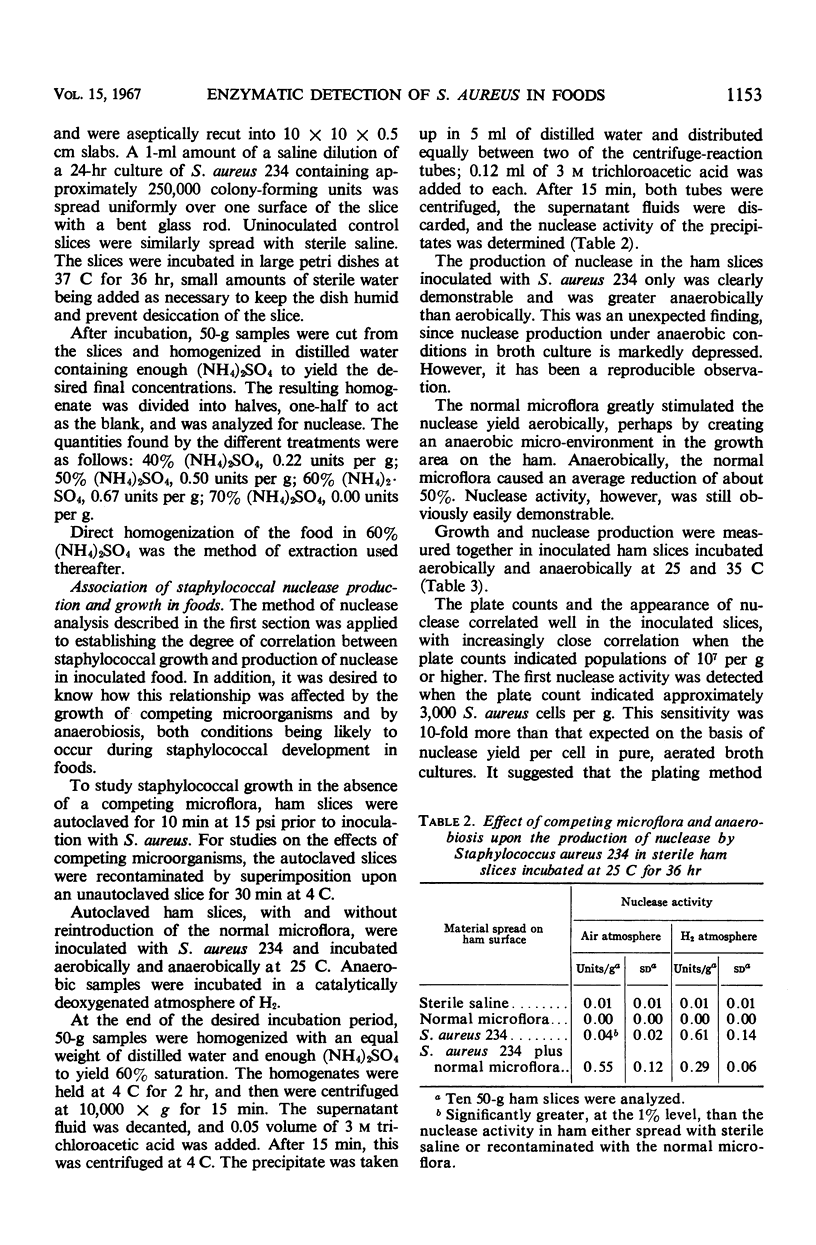
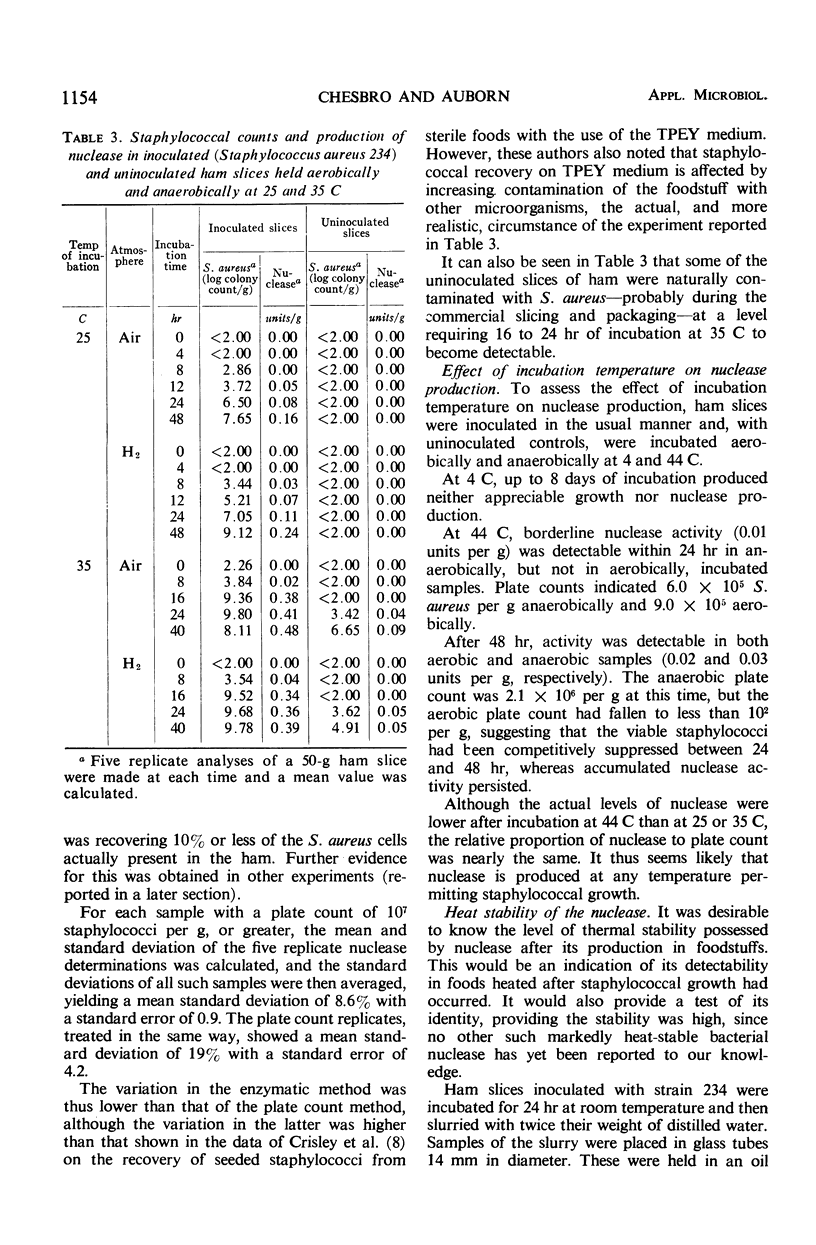

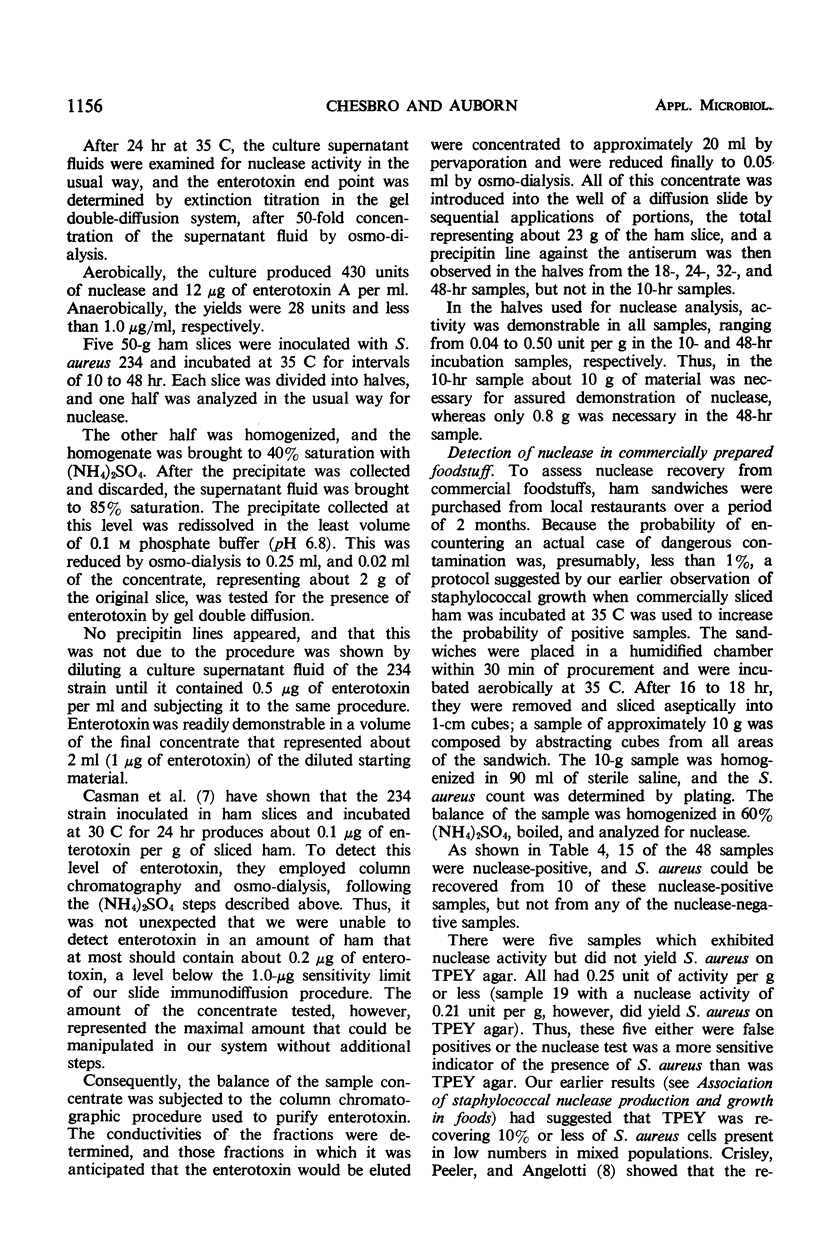
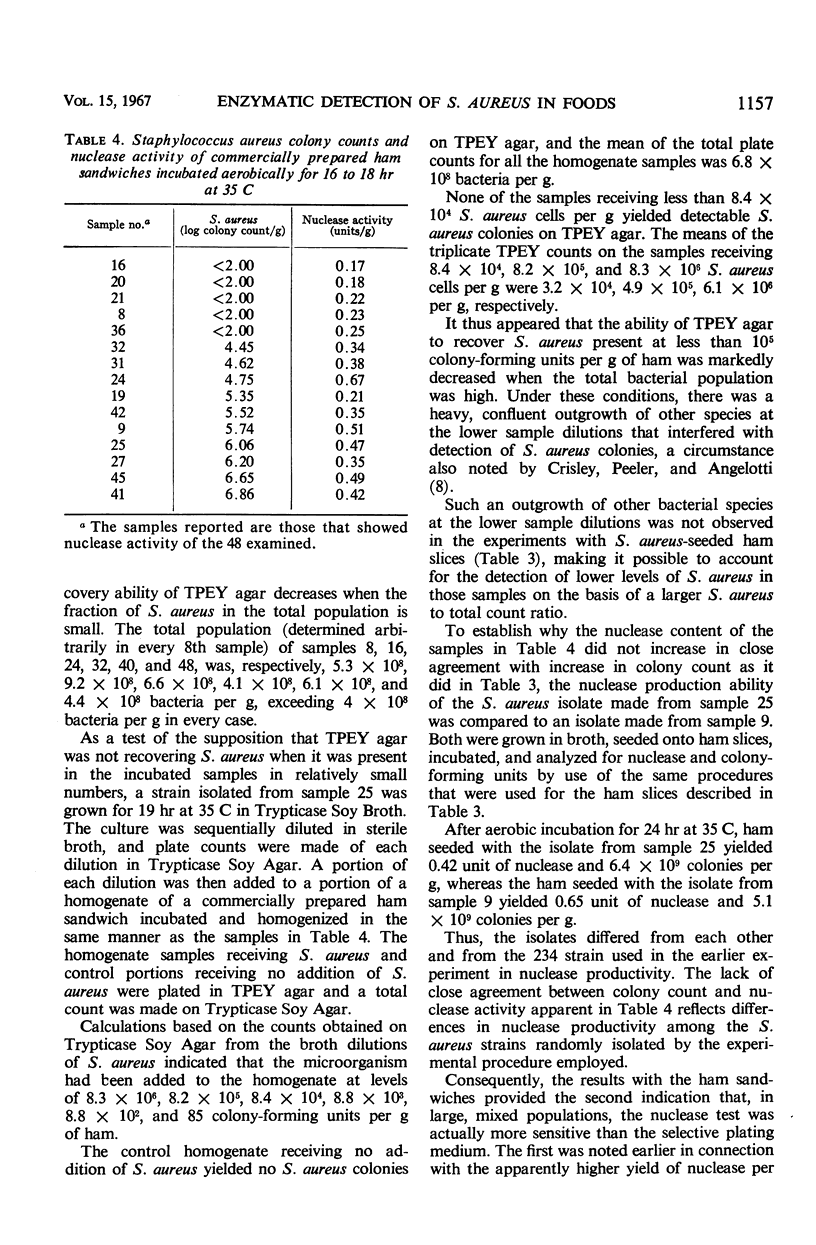
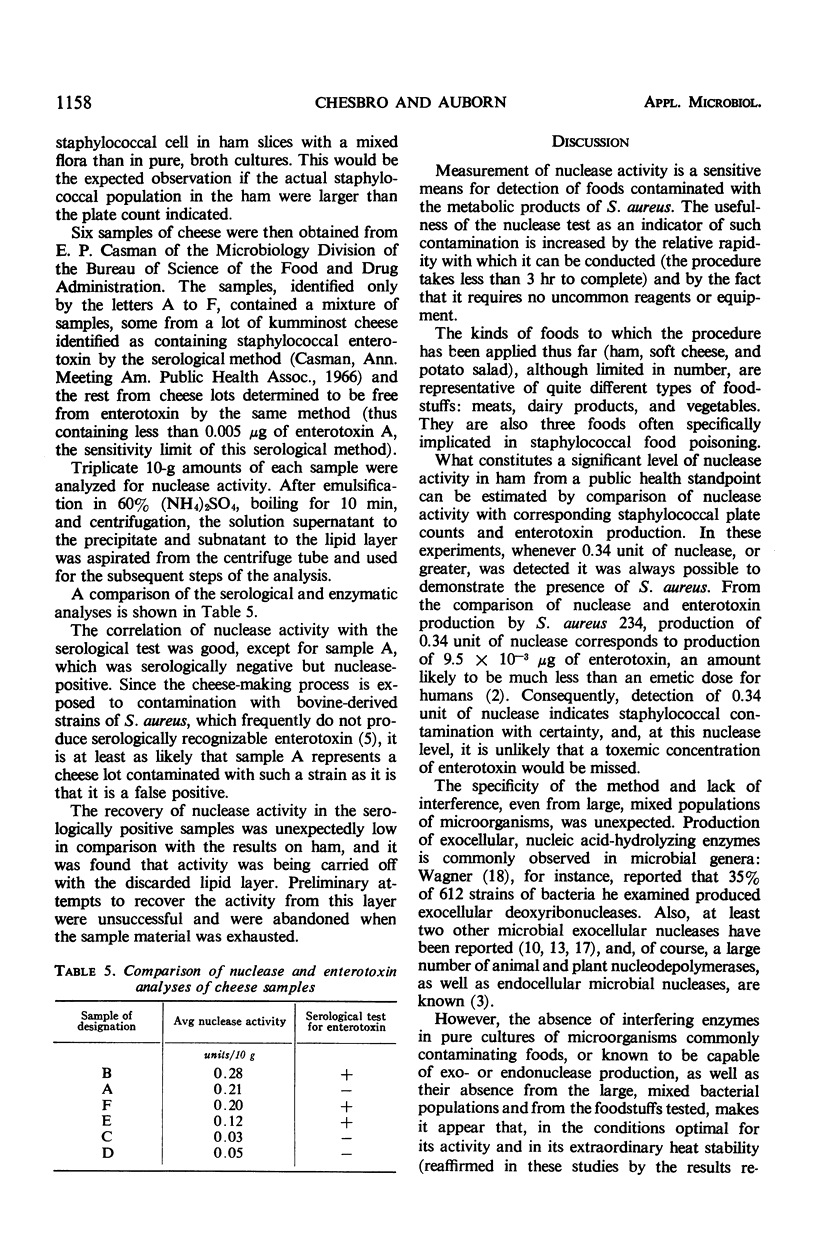

Selected References
These references are in PubMed. This may not be the complete list of references from this article.
- BERGDOLL M. S., SUGIYAMA H., DACK G. M. Staphylococcal enterotoxin. I. Purification. Arch Biochem Biophys. 1959 Nov;85:62–69. doi: 10.1016/0003-9861(59)90447-3. [DOI] [PubMed] [Google Scholar]
- BURNS J., HOLTMAN D. F. Biochemical properties of virulent and avirulent staphylococci. Ann N Y Acad Sci. 1960 Nov 21;88:1115–1124. doi: 10.1111/j.1749-6632.1960.tb20101.x. [DOI] [PubMed] [Google Scholar]
- CASMAN E. P., MCCOY D. W., BRANDLY P. J. STAPHYLOCOCCAL GROWTH AND ENTEROTOXIN PRODUCTION IN MEAT. Appl Microbiol. 1963 Nov;11:498–500. doi: 10.1128/am.11.6.498-500.1963. [DOI] [PMC free article] [PubMed] [Google Scholar]
- CHESBRO W. R., HEYDRICK F. P., MARTINEAU R., PERKINS G. N. PURIFICATION OF STAPHYLOCOCCAL BETA-HEMOLYSIN AND ITS ACTION ON STAPHYLOCOCCAL AND STREPTOCOCCAL CELL WALLS. J Bacteriol. 1965 Feb;89:378–389. doi: 10.1128/jb.89.2.378-389.1965. [DOI] [PMC free article] [PubMed] [Google Scholar]
- CRISLEY F. D., PEELER J. T., ANGELOTTI R. COMPARATIVE EVALUATION OF FIVE SELECTIVE AND DIFFERENTIAL MEDIA FOR THE DETECTION AND ENUMERATION OF COAGULASE-POSITIVE STAPHYLOCOCCI IN FOODS. Appl Microbiol. 1965 Mar;13:140–156. doi: 10.1128/am.13.2.140-156.1965. [DOI] [PMC free article] [PubMed] [Google Scholar]
- Casman E. P. Staphylococcal enterotoxin. Ann N Y Acad Sci. 1965 Jul 23;128(1):124–131. doi: 10.1111/j.1749-6632.1965.tb11634.x. [DOI] [PubMed] [Google Scholar]
- ELSTON H. R., FITCH D. M. DETERMINATION OF POTENTIAL PATHOGENICITY OF STAPHYLOCOCCI. Am J Clin Pathol. 1964 Oct;42:346–348. doi: 10.1093/ajcp/42.4.346. [DOI] [PubMed] [Google Scholar]
- Eaves G. N., Jeffries C. D. ISOLATION AND PROPERTIES OF AN EXOCELLULAR NUCLEASE OF SERRATIA MARCESCENS. J Bacteriol. 1963 Feb;85(2):273–278. doi: 10.1128/jb.85.2.273-278.1963. [DOI] [PMC free article] [PubMed] [Google Scholar]
- JACOBS S. I., WILLIS A. T., GOODBURN G. M. SIGNIFICANCE OF DEOXYRIBONUCLEASE PRODUCTION BY STAPHYLOCOCCI. Nature. 1963 Nov 16;200:709–710. doi: 10.1038/200709b0. [DOI] [PubMed] [Google Scholar]
- LOWRY O. H., ROSEBROUGH N. J., FARR A. L., RANDALL R. J. Protein measurement with the Folin phenol reagent. J Biol Chem. 1951 Nov;193(1):265–275. [PubMed] [Google Scholar]
- OHSAKA A., MUKAI J. I., LASKOWSKI M., Sr THE USE OF PURIFIED MICROCOCCAL NUCLEASE IN IDENTIFYING THE NUCLEOTIDE TERMINUS BEARING A FREE 5'-MONOPHOSPHATE. J Biol Chem. 1964 Oct;239:3498–3504. [PubMed] [Google Scholar]


